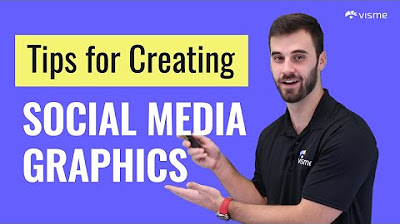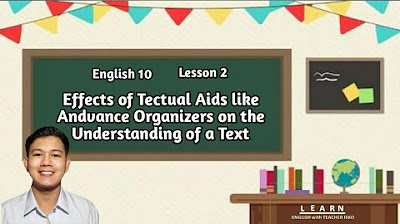15 Creative Graphic Organizer Types to Visualize Your Content
Summary
TLDRIn this video, Mike from Viz Me introduces 15 graphic organizers designed to simplify complex projects and assignments. He explains how these visual tools can structure thoughts, enhance learning, and expedite work processes. Examples include circle maps for basic brainstorming, spider maps for detailed topic definition, and Venn diagrams for comparing multiple subjects. The video also touches on more complex organizers like concept maps and tree charts, catering to various settings from education to business. Each organizer is demonstrated with practical examples, showcasing their utility in organizing and visualizing information effectively.
Takeaways
- 📊 **Graphic Organizers for Clarity**: Using graphic organizers can help visualize ideas and make complex projects more manageable.
- 🌀 **Circle Map**: A simple tool with an inner circle for the main idea and an outer circle for related ideas, useful for brainstorming.
- 🕷️ **Spider Map**: Similar to a circle map but focuses on defining a topic in detail with 'legs' extending to specific actions or phrases.
- 🔄 **Idea Wheel**: Combines elements of circle and spider maps, allowing for a main point with related points and further detailed sections.
- 🌐 **Idea Web**: Connects two spider maps to compare and contrast topics, highlighting similarities and differences.
- 🧠 **Concept Map**: Organizes a main subject with sub-headers and detailed points, ideal for personal brainstorming sessions.
- 🔤 **Venn Diagram**: Visually compares the similarities and differences between multiple topics, often used in educational settings.
- 🌳 **Tree Chart**: Organizes information hierarchically, useful for outlining tasks or classifying information.
- 📊 **Organizational Chart**: Focuses on hierarchy, often used to represent the structure within a company or team.
- ➡️ **Sequence of Events Chain**: Illustrates a process or progression with clear steps leading to an end goal, helpful for understanding processes.
- 🔄 **Cause and Effect Map**: Helps to outline the causes on one side and effects on the other, useful for analyzing events and their outcomes.
Q & A
What is a graphic organizer and how can it help with a new project?
-A graphic organizer is a visual tool that helps structure thoughts and ideas by organizing them into a diagram or chart. It can help with a new project by providing a clear and structured way to visualize all ideas, facts, statistics, and concepts, making it easier to manage and understand complex information.
What are the benefits of using graphic organizers for students?
-Graphic organizers provide a visual display of information, which can help students learn topics more easily by making connections and relationships between ideas more apparent. They can also aid in the comprehension and retention of complex subjects.
Can you explain the structure of a circle map and how it can be used?
-A circle map consists of two circles: a larger outer circle and a smaller inner circle. The inner circle represents the main idea or topic, while the outer circle contains related or corresponding ideas. It can be used in various settings, such as brainstorming sessions, teaching, or organizing thoughts around a central concept.
How does a spider map differ from a circle map and what is it used for?
-A spider map is similar to a circle map but focuses on defining a topic in detail. It has a central circle for the main point and 'legs' that extend outwards to specific actions, phrases, or characteristics related to the main point. It's used to explore details and relationships around a central concept or to set goals and identify steps to achieve them.
What is an ideal wheel and how does it combine elements of other organizers?
-An ideal wheel combines elements of a circle map and a spider map. It has a central point and an outer circle with related points, and then sections of information or more detailed points connected to those outer points. It's excellent for freestyle brainstorming and visualizing the bigger picture of a topic.
How can an idea web be used to compare two subjects?
-An idea web connects two spider maps, allowing for the comparison of two subjects by highlighting identical points where the maps connect and extending the differences in opposite directions. It's useful for comparing characters in a novel, different habitats, or weighing the pros and cons of two choices.
What is a concept map and how is it different from an ideal web?
-A concept map is a more complex organizer that branches out from a main subject into various sub-headers and then into detailed points. Unlike an ideal web, which focuses on similarities, a concept map is used to organize a large amount of information and can be more personal and complex in appearance.
How does a Venn diagram help in comparing multiple topics?
-A Venn diagram visually compares the differences and similarities between multiple topics by having overlapping circles. Each circle represents a topic, and the areas of overlap show commonalities, while the unique areas of each circle represent the distinct features of each topic.
What is a tree chart and how can it be used to organize tasks?
-A tree chart is used to organize individuals or tasks leading up to an event. It starts with a main title at the top, followed by subtopics and then relevant information branching out towards the bottom. It can be used in various settings, such as organizing the details of a subject matter in school or tasks and individuals assigned to them in a project.
How does an organizational chart differ from a tree chart and what is it used for?
-An organizational chart differs from a tree chart in that it focuses on hierarchy rather than classification. It's commonly used to establish a ranking order within a company, showing the structure from top management to staff. It helps visualize a team's hierarchy and understand who is in charge of different aspects of a product or service.
What is a sequence of events chain and how can it be used to represent a process?
-A sequence of events chain is a graphic organizer that represents a process, progression, or instructions to reach an end goal. It starts with a heading and then creates a clear progression with points leading towards the next, showing the order of events or steps in a process.
How can a cause and effect map help in understanding complex situations?
-A cause and effect map helps by visually organizing the causes on one side and the effects on the other, with the main event or topic in the center. It's versatile and can be used to understand outcomes given potential actions, such as analyzing air pollution or planning a project by listing ways to achieve it and its possible outcomes.
What is a brace map and how does it differ from a tree chart?
-A brace map is for visualizing every detail of a real-life topic by breaking down a big picture object into individual components. Unlike a tree chart, which is more conceptual and used for classification, a brace map is more detailed and used for breaking down complex topics into understandable parts.
How can analogies be used as a teaching tool with graphic organizers?
-Analogies highlight similarities between different items and can be used as a teaching tool by turning a written analogy into a visual graphic organizer. This makes the content more appealing and helps in understanding complex topics by relating them to familiar concepts.
What is a T-chart and how can it be used to compare two things?
-A T-chart is used for comparing two things, often listing their pros and cons on each side of the chart. It's designed to find differences rather than similarities and can be used to present a clear comparison when proposing new ideas or analyzing options.
How can a timeline graphic organizer help in understanding historical events?
-A timeline graphic organizer helps in understanding historical events by representing them along a horizontal line with specific dates and times. It allows for a clear visualization of the sequence of events, making it easier to follow the history of a subject or the progression of a process.
What is a storyboard and how can it be used in education and project planning?
-A storyboard is used to portray individual scenes or steps in a sequence, commonly seen in film and video production. In education, it can be used to teach sequencing in novels, while in project planning, it can help visualize and communicate the progression of a project or event.
Outlines

Dieser Bereich ist nur für Premium-Benutzer verfügbar. Bitte führen Sie ein Upgrade durch, um auf diesen Abschnitt zuzugreifen.
Upgrade durchführenMindmap

Dieser Bereich ist nur für Premium-Benutzer verfügbar. Bitte führen Sie ein Upgrade durch, um auf diesen Abschnitt zuzugreifen.
Upgrade durchführenKeywords

Dieser Bereich ist nur für Premium-Benutzer verfügbar. Bitte führen Sie ein Upgrade durch, um auf diesen Abschnitt zuzugreifen.
Upgrade durchführenHighlights

Dieser Bereich ist nur für Premium-Benutzer verfügbar. Bitte führen Sie ein Upgrade durch, um auf diesen Abschnitt zuzugreifen.
Upgrade durchführenTranscripts

Dieser Bereich ist nur für Premium-Benutzer verfügbar. Bitte führen Sie ein Upgrade durch, um auf diesen Abschnitt zuzugreifen.
Upgrade durchführenWeitere ähnliche Videos ansehen

TEXTUAL AIDS || GRADE 10 || MELC-based VIDEO LESSON | QUARTER 1 | Module 2

How to Tips for Creating Social Media Graphics - Graphic Design Tutorial

Textual Aids - English 10 - Lesson 2

Using Graphic Organizers to Support Students with Disabilities

ADHD Classroom Strategies

TEXTUAL AIDS || Grade10|| MELC-based VIDEO LESSON | QUARTER 1| MODULE 2
5.0 / 5 (0 votes)
